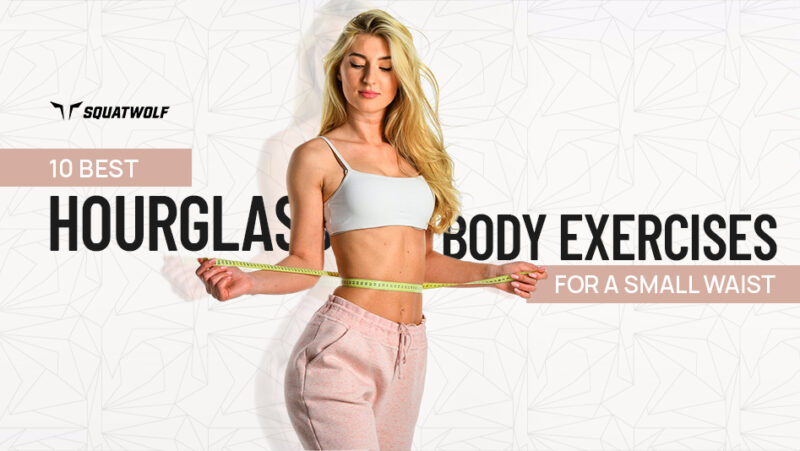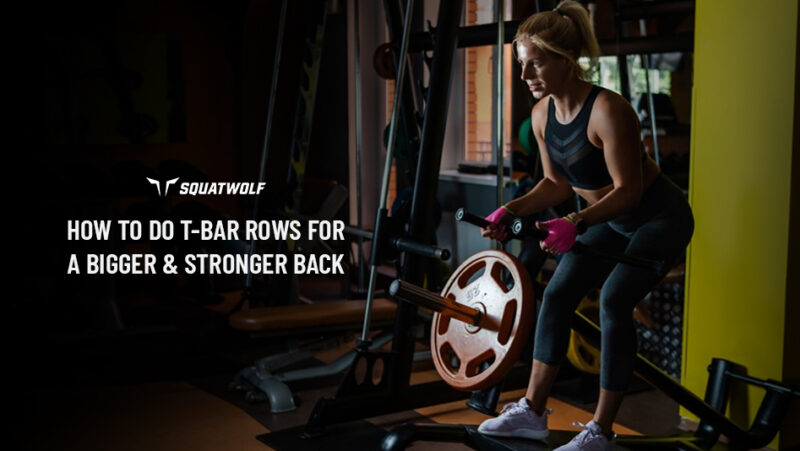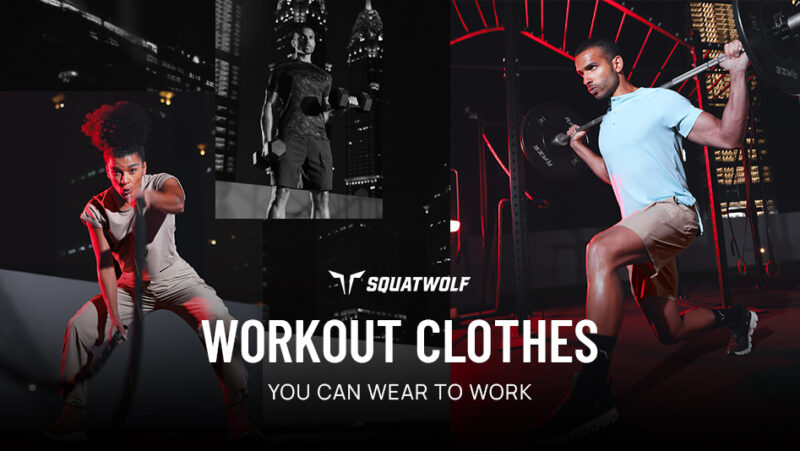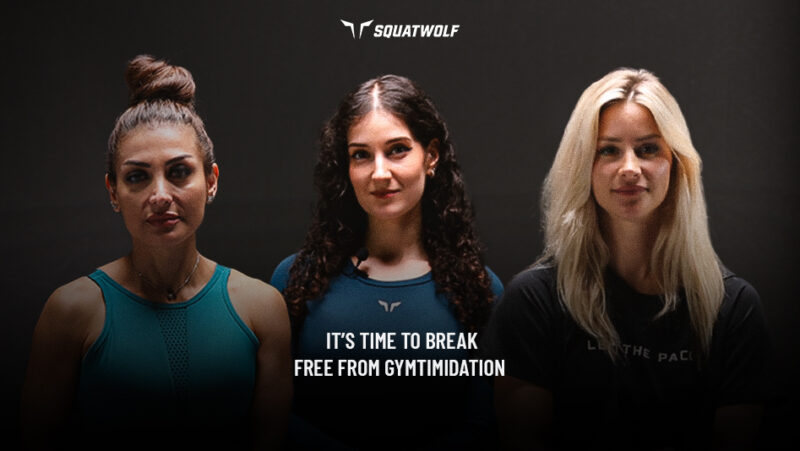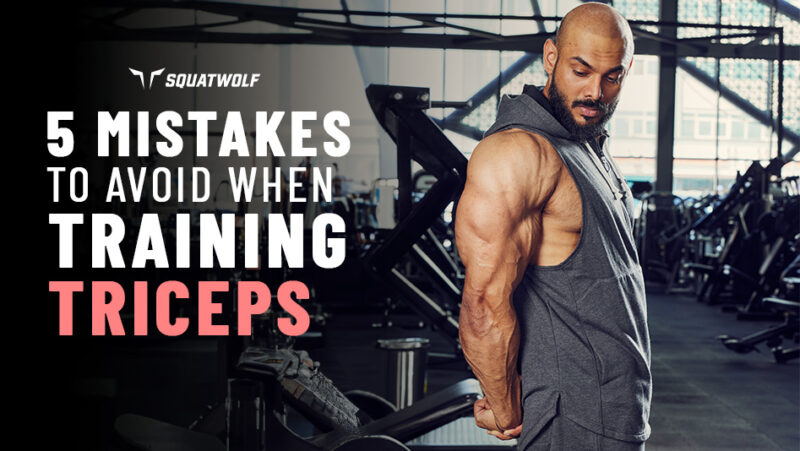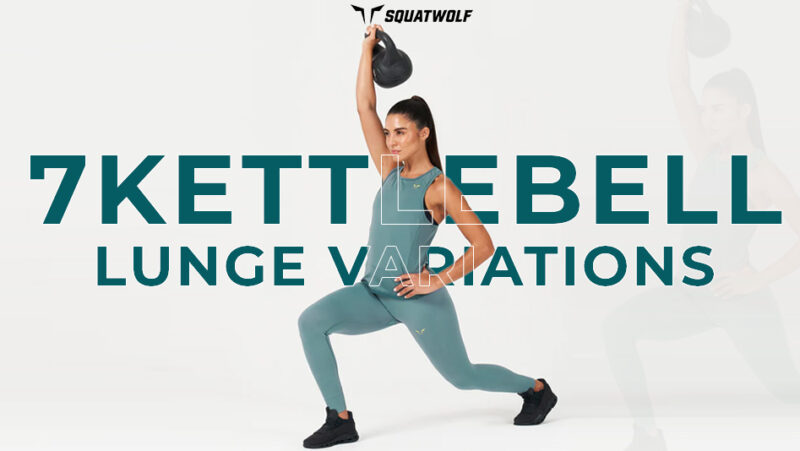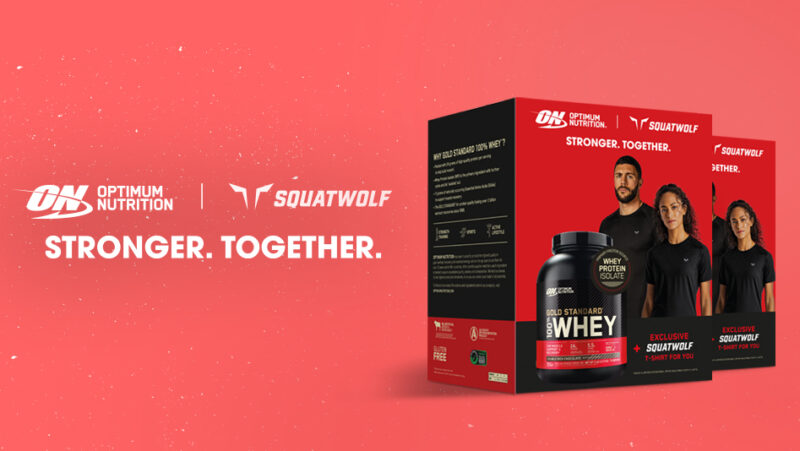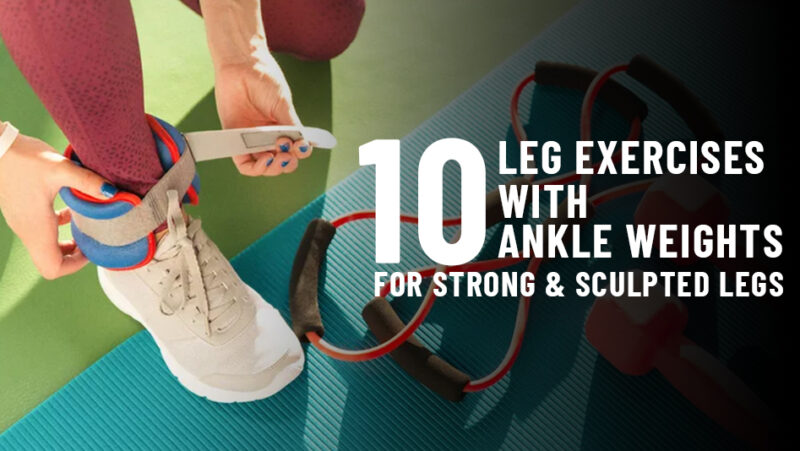How to do Curtsy Lunges – Summary
A robust exercise, curtsy lunges activate different muscle groups in your lower body including your glutes, inner and outer thighs, quads, hamstrings and calves. Some variations of curtsy lunges include:
- Dumbbell Curtsy Lunges
- Curtsy Lunge with a Side Kick
- Barbell Lunges
- Lunge Jumps
- Reverse Lunge Holds
- Lateral Lunges
Perfect your form by understanding your muscular anatomy, variations and the common mistakes to avoid while performing curtsy lunges.
How to Do Curtsy Lunges | Muscles Worked | Common Mistakes | Benefits | Variations | Dumbbell Curtsy Lunges | Curtsy Lunges With A Side Kick | Barbell Lunges | Lunge Jumps | Reverse Lunge Holds | Lateral Lunges | Key Takeaways | FAQs
Curtsy Lunges – Step Up Your Lower Body Workout
Did you know that curtsy lunges activate up to 20% more muscle fibers in your glutes than regular lunges?
This is not just a fancy move to show off in the gym – it’s a dynamic exercise that delivers both strength and definition. In fact, research suggests that incorporating lateral movements like curtsy lunges enhances hip stability by over 30%.
With each movement, you’re targeting muscles you probably didn’t even know you had in your lower body! This is the primary reason why curtsy lunges are such a fundamental exercise in a full-fledged leg workout.
Dive deeper into the anatomy of a perfect curtsy lunges. Understand the muscles worked, and get tips to avoid common pitfalls.
Ready to elevate your lunge game?
How To Do A Curtsy Lunge
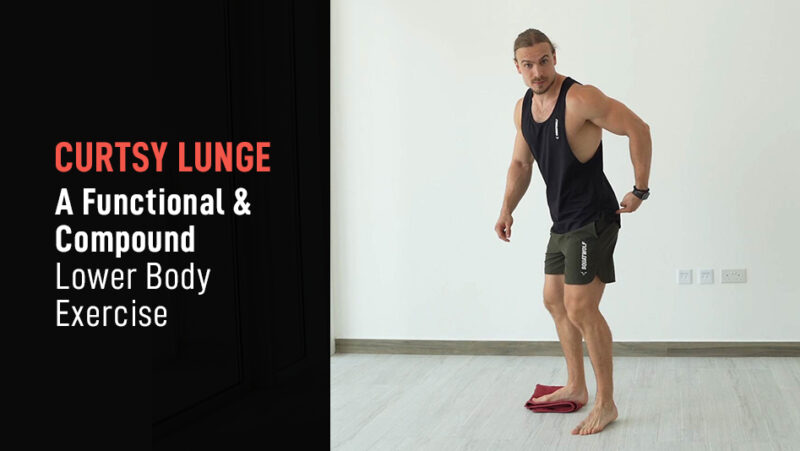
A curtsy lunge is a bodyweight exercise that requires no equipment. However, there is a dumbbell or kettlebell variation you can do to strain your quads and glutes more.
Step-by-Step Instructions
- Start off in a standing position with your feet hip-width apart.
- Your hands can be placed on your thighs or kept at chest level.
- Next, take a step back with your right leg and place it behind your left leg.
- Bend your knee and lower down until your left thigh is parallel to the floor
- Make sure your chest and back stay straight during the movement.
- Now, drive back up to your starting position slowly
- Alternate your feet and repeat the motion to complete one repetition

Get Your Curtsy Lunges Form Right – Tips
- Upper Body: Keep your spine neutral. Avoid leaning forward or backward. Relax your shoulders – don’t hunch them.
- Head: Align your neck and spine by keeping your head straight. Don’t bend it down.
- Knee Angle: Your front thigh should be parallel to the ground to create a 90° angle.
Foot Position: Keep your toes pointed forward to balance your body.
- Inhale: Breathe in as you step back into the lunge.
- Exhale: Breathe out as you return.
- Core Engagement: Brace your core muscles throughout the movement to maintain stability and protect your lower back.
- Balanced Movement: Control your movement to avoid wobbling or disbalance.
- Depth: Deep lunge as you get a better grip of the movement.
- Speed: Keep your speed controlled and steady to correctly perform the exercise.
- Workout Gear: Make sure your shoes and workout leggings are on – this will give you support and comfort during the exercise.
- Flooring: Perform the exercise on a flat, non-slip surface to ensure safety.
- Hand Position: Place your hands where you’re comfortable doing your exercise.
- Step Length: Step as far back as you can comfortably – do not overstep as this could strain your joints.
What Muscles Does A Curtsy Lunge Work?
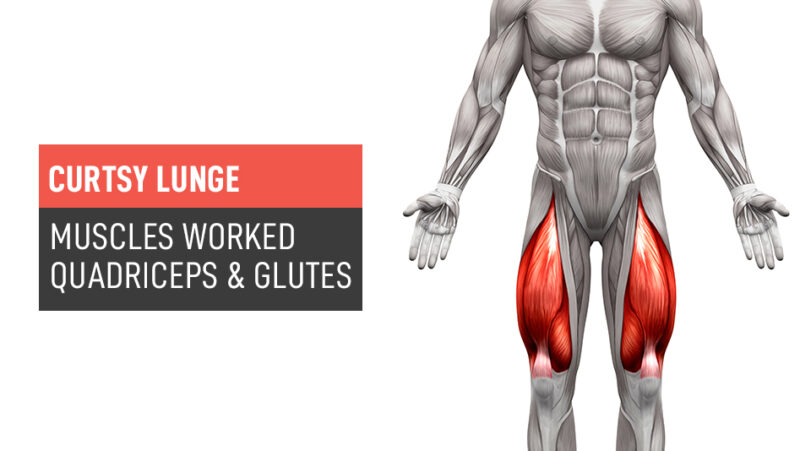
The primary muscles that feel the burn are your quadriceps and glutes.
All four muscles that make up your quadriceps are strained with this exercise. Working on these muscles greatly increases the explosiveness and strength of your quadriceps.
When it comes to your glutes. A curtsy lunge activates the gluteus maximus, the biggest muscle of your glutes, along with the gluteus medius and minimus. This exercise also strains the gluteus medius and minimus more than traditional lunges.
The secondary muscles are those muscles that aren’t directly engaged but still get strained due to their supporting role. When doing a curtsy lunge, you’re also using. Your calves are activated during the lowering movement, this stresses your soleus and gastrocnemius. These muscles work as a stabilizer, especially for the leg that is stationary.
Common Mistakes During Curtsy Lunge
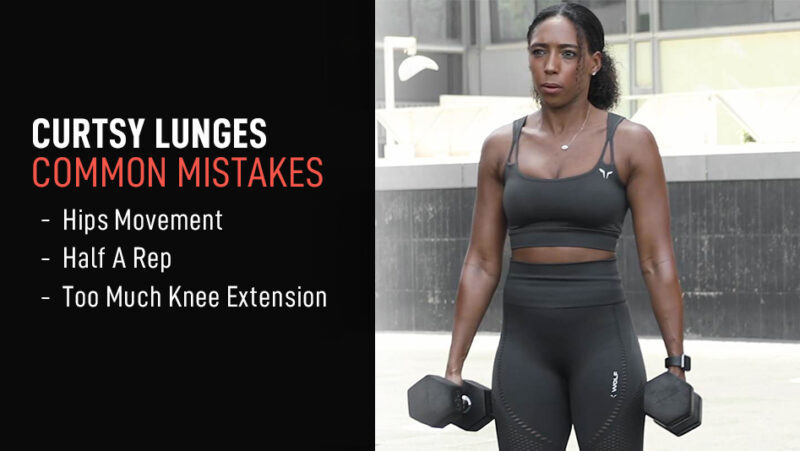
Hip Movement
It’s a general rule of any exercise. The muscles that aren’t meant to be used, should be stationary throughout the movement.
Make sure that your hips are kept square when lowering yourself down. This will keep the strain where it needs to be and keep you balanced during the motion. Opt for good seamless workout shorts to maximize efficiency.
Unnecessary Knee Extension
Your knees shouldn’t extend over your toes. The motion should be balanced with your knees going downwards and less outward.
When your knees cross the toe line, you are placing extra stress on your knees which can cause injury. Make sure your front knee stays in line with your ankle, this will help to properly distribute weight, minimize unnecessary strain and keep the stress on your glutes.
Half A Rep
Half a rep is equal to no rep. If you want to reap the benefits from every single repetition then make sure you are going down enough.
A general rule of thumb is that when you lower yourself your alternating thigh should become parallel with the floor. Also, lower your knee till it’s just off the ground.
What Are The Benefits Of A Curtsy Lunge?
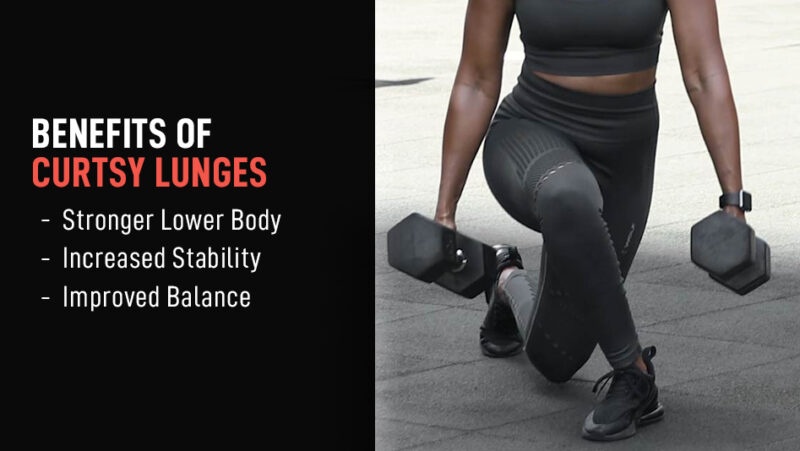
Stronger Lower Body
The curtsy lunge is an effective variation of a lunge that powers your lower body. Remember, all your muscles work in coordination with one another. Life isn’t lived in the gym, your gains reflect your strength outside as well.
If a few muscle groups of your lower body are stronger than others, then others will fall short to support the major muscle groups during functional movements. This is why your leg workouts need to be versatile that work not just the major muscle groups but the hard to activate spots as well.
Whether you are trying to deadlift or squat more or play football, curtsy lunges help you develop muscles in your inner thighs that are hard to activate.
Improved Balance & Stability
The crisscross motion engages your core, hips, quads, calves, and ankles. All these muscles help in stabilizing your lower body. The curtsy lunge will train your muscle memory to get used to this movement.
This in turn will help increase control. The slower you go down, the more your body will get used to the motion. This practice will help build a connection between your body and mind. Once, the action becomes seamless, your mind will learn to balance itself in a new position and your muscles will be strong enough to help.
Curtsy Lunge Variations & Alternatives
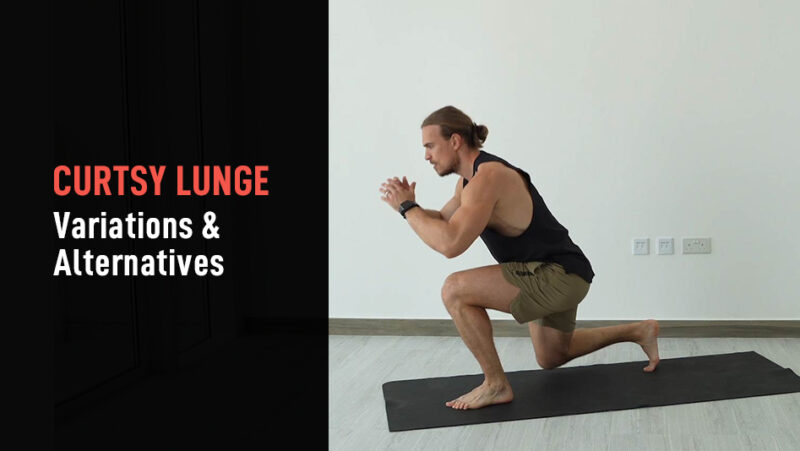
If you have gotten the hang of the basic curtsy lunges, it’s time to kick it up a notch. Adding dumbbells or a kettlebell to the mix is a great way to escalate the intensity.
If you’re not big on weights, you can add other forms of resistance to make your workout more challenging. This could be anything – from pulses, pauses and holds to jumps and kicks!
Dumbbell Curtsy Lunges
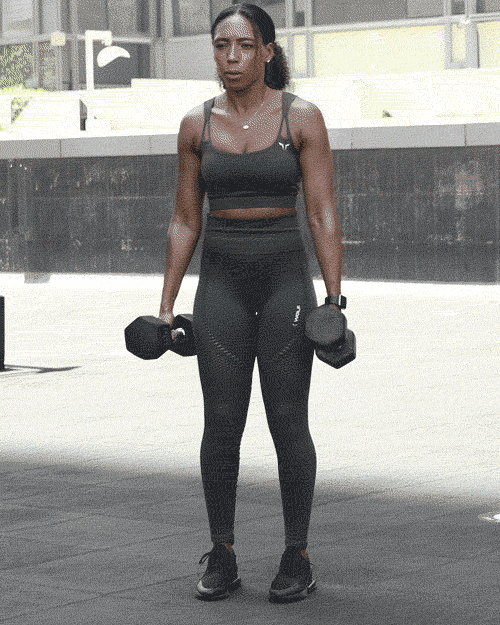
The movement stays exactly the same. Instead of your arms being up at chest level or on your hips, they will be down by the sides holding dumbbells.
The form is key here as adding weights to mix can mess with your balance. Never lift more than you can handle as form should never be compromised on. Also, with the addition of weight, pay extra attention to your back and chest, they should remain straight throughout the movement.
Remember, a dumbbell leg workout can be super intense so only train with weights you’re able to lift comfortably.
Curtsy Lunges With A Side Kick
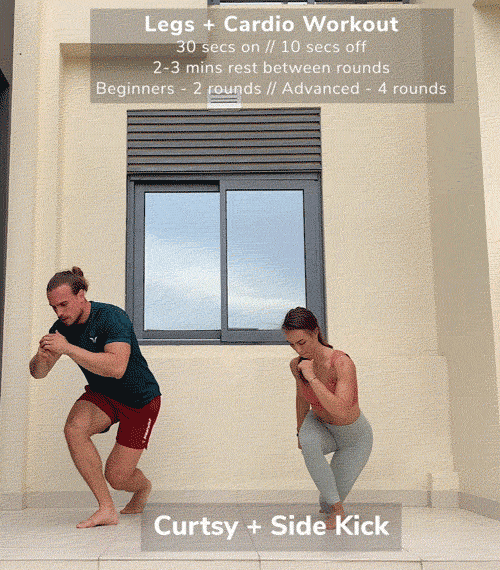
On your way back up, instead of alternating feet, you extend your leg out to the side. Once, your knee has gone all the way down. Come back up slowly. As soon as you are about to return to the starting position, kick your leg out to the side.
This added movement will be hard to master initially. However, it’s great for working on flexibility, balance, and stability. You can add this move to your 20 minute legs and booty workout at home to get those thunder thighs!
Barbell Lunges
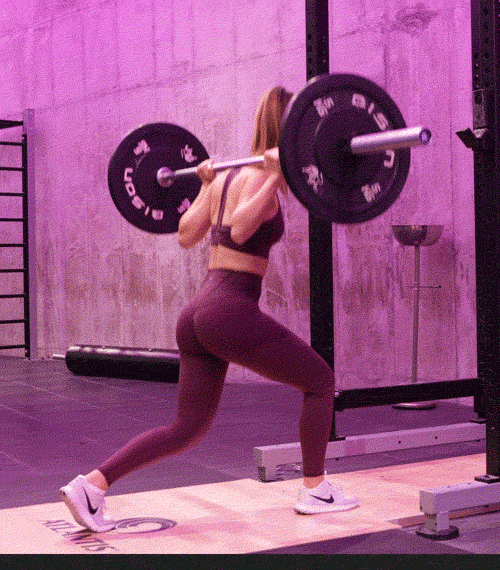
Coming back to the traditional weighted lunges. The barbell lunge is an effective strength-building exercise.
Fix a barbell with an appropriate amount of weight. Next, face the rack and place the barbell on your shoulders. Now, lower your knee down until it’s off the floor and the alternating thigh is parallel to the floor.
If you feel uncomfortable or intimidated by weights, you can always overload with resistance band leg exercises.
Lunge Jumps
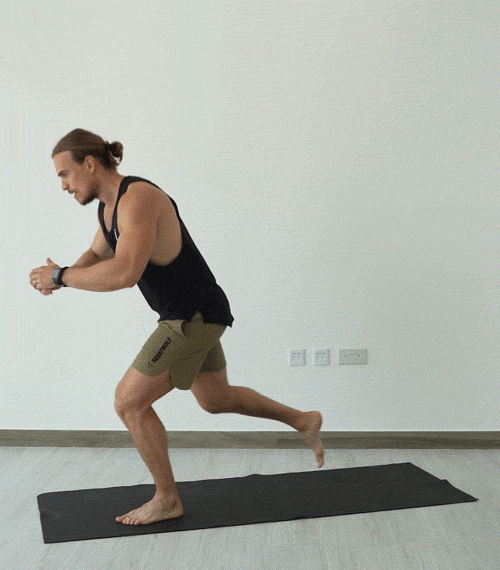
This is another bodyweight lunge variation. It’s quite simple but will add explosive power to your lower body. The variation adds a jump when you are returning to your rest position.
So, when your knee has been lowered, instead of slowly rising up, push yourself up into a jump and then lower down with the alternating knee. Of course, you need strong quads to effectively complete this exercise so make sure to do quad exercises for stronger legs.
If you do this fast enough, a few sets will be enough to set your thighs ablaze.
Reverse Lunge Holds
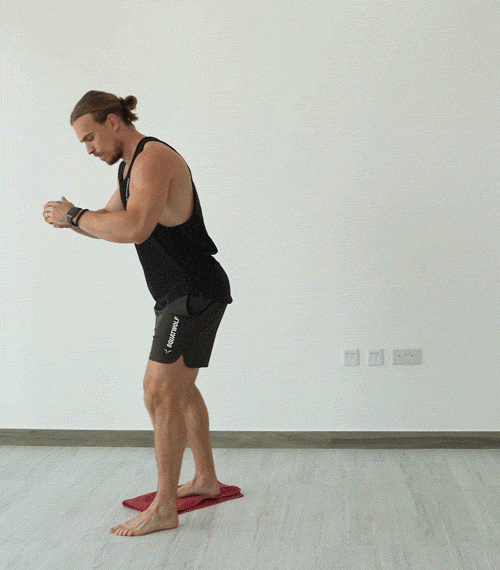
Okay, this variation really burns your buttocks, thighs, and even calves. Hit a reverse lunge and then just hold and then keep on holding for some more. When you hold a movement in which your muscles are activated, every second becomes more and more difficult.
Your muscles are meant to contract and relax. Keeping them in a constant state of contraction can lead to an increase in muscle mass and strength. Since this exercise works on your balance as well, it requires you to have strong calves. Make sure to incorporate calf exercises to build strength, stability and improve your overall balance.
Lateral Lunges
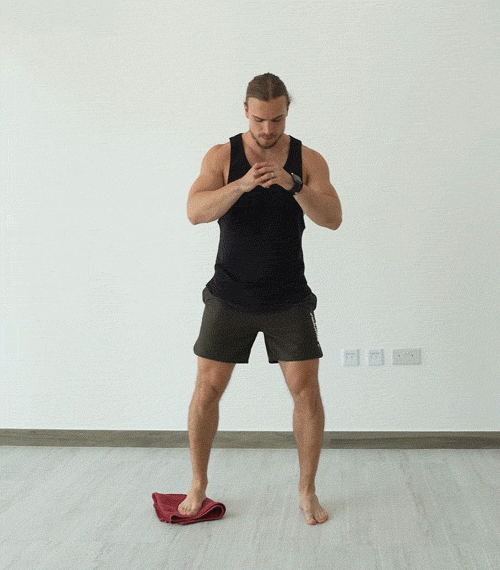
Lateral lunges are like a curtsy lunge but to the side. Instead of a forward motion, your leg will shift to the side.
Push your leg to the side, but not too far to strain your groin or other muscles to injury. This is a tough variation as this movement is not something our muscles are accustomed to.
Key Takeaways
A leg workout for women is entirely incomplete without a curtsy lunge. Not only is it an effective exercise to tone your lower body, it helps to build functional strength, increases stability and stabilization.
If your life is fast paced, your legs need to be able to keep up. Strong legs also help fight age-related bone disorders and pains. This exercise is easy to master as the form isn’t complicated. You can also heat up the intensity by adding a few variations to your mix. Note: It is recommended that you opt for proper workout clothes before starting your exercises to maximize your workout efficiency.
FAQs
What is the difference between a Curtsy lunge and a lunge?
A curtsy lunge is a more advanced version of a regular lunge. Firstly, they are both performed in different ways – with a traditional lunge, you’re supposed to step backward whereas for a curtsy lunge, you step back diagonally. Secondly, curtsy lunges engage your hips and outer and inner thighs more than regular lunges, giving you better muscle activation. And lastly, curtsy lunges aren’t just a great lower body workout, they also improve your body’s coordination and balance, helping you improve your mobility.
Do curtsy lunges widen hips?
While your bone size remains the same, curtsy lunges can lead to wider hips. This is because this intense leg exercise targets your glutes, quads, hamstrings, and inner and outer thighs. When you add resistance to this exercise through dumbbells or resistance bands, your muscles will grow, which adds mass to your hips. As your glutes grow, you might feel like your hips have ‘widened’. However, this exercise does burn fat. So if you’re already overweight and experience fat loss, your hip size will change and become more defined.
Do curtsy lunges grow glutes?
Yes, curtsy lunges help in growing your glutes and giving you perkier and stronger glutes. These lunges effectively engage your glute maximum, medius and minimus. With more muscle engagement, your glutes will grow. In addition, since curtsy lunges activate more muscle fiber, they help you gain mass in your glutes. For muscle growth, resistance training is recommended. By incorporating weights or resistance bands during your curtsy lunges, you’ll be able to maximize the size of your glutes. And finally, since curtsy lunges help you gain glute strength, they help you lift heavier weights on other exercises such as hip thrusts, kickbacks, etc. This leads to stronger, peachier and bigger glutes.
Continue Reading


